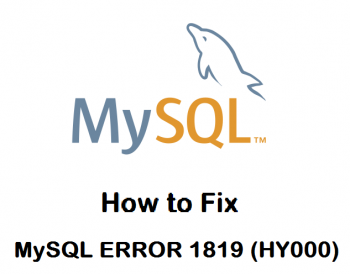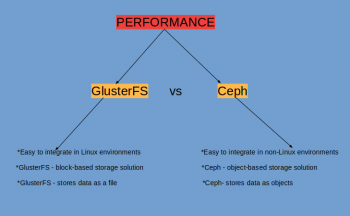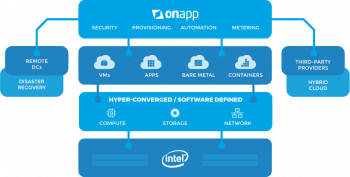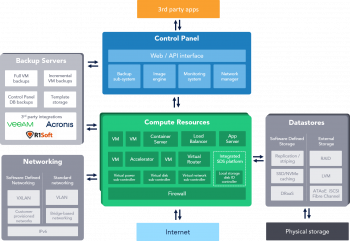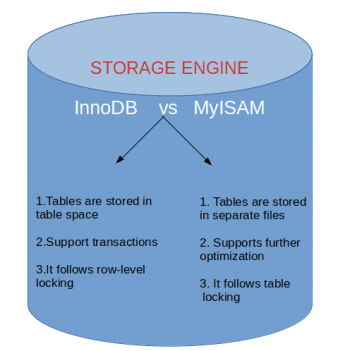MySQL error 1819 HY000
This article will guide you on how to resolve MySQL error 1819 (HY000) which happens when creating a MySQL user with a relatively weak password.
Because of validate_password_policy we applied on database, we are not able to change and assign simple or weak passwords it don't allow to to change password and came up with error.
To resolve this error, We can check validate_password_policy applied on machine. Also you can change your password under Low policy.
Solution to MySQL Error Your Password does not satisfy the Current Policy Requirements:
1. Set the Password_policy value to low, next is setting the same Password_Policy value in my.cnf file and the last is uninstalling the plugin that is used for validating password.
2. Set the Password_Policy to low:
Default Password level of plugin can be changed at runtime or using config file.
To do this, default authentication plugin has to be checked:
SHOW VARIABLES LIKE 'default authentication plugin';3. For checking the current variables for validating the password you should run the following command:
SHOW VARIABLES LIKE 'validate_password%';4. Validate_password is a variable that is used to inform the server about the validate_password plugin.
This plugin tests the passwords and improve security.
Following output will be displayed, if you run the above command:
mysql> SHOW VARIABLES LIKE 'validate_password%';
GlusterFS vs Ceph performance
This article will guide you on the differences between GlusterFS vs Ceph Performance. The decision on transfer sizes could itself account for Ceph running faster or slower than Gluster.
Deciding whether to use Ceph vs. Gluster depends on numerous factors, but either can provide extendable and stable storage of your data.
Ceph and Gluster are both systems used for managing distributed storage. The goal is high performance, massive storage, and compatibility.
Ceph provides a POSIX-compliant network file system (#CephFS) that aims for high performance, large data storage, and maximum compatibility.
GlusterFS and Ceph are two distributed persistent storage systems. #GlusterFS is at its core a network filesystem.
Ceph is at the core an object store.
OnApp Cloud
This article will guide you on OnApp cloud. You will also learn about its dashboard and features.
OnApp Enterprise is a complete on-premises cloud solution for SMBs and enterprises.
It makes private and hybrid cloud easier to manage and easier to scale.
OnApp clouds can be created on almost any commodity x64 infrastructure, and across heterogeneous compute and storage hardware.
The features of OnApp cloud comprise of:
1. Public, private & hybrid cloud, plus VPS
2. Xen, KVM & VMware, plus Amazon EC2
3. Storage, backup and disaster recovery
4. Smart servers & bare metal servers
5. Global cloud & CDN through OnApp federation
6. CPU, disk, IOPS,RAM, servers, networks & more
OnApp is used:
i. By Telcos, MSPs and other service providers to create, manage and sell their own IaaS cloud products - either using their own datacenter infrastructure, third party infrastructure or hyperscale infrastructure.
ii. OnApp is used by hosts, telcos, MSPs, CDN vendors and other service providers to sell public/private/hybrid cloud services; and by enterprises for on-premise private & hybrid public/private cloud.
Managing Hypervisor with OnApp
This article will guide you on OnApp which is a complete cloud management software. Basically, OnApp is one of the popular #software for managing hypervisors.
Hypervisors support the creation and management of virtual machines (#VMs) by abstracting a computer's software from its hardware.
OnApp is a complete Infrastructure-as-a-Service solution for cloud providers, #CDN providers, telcos, carriers, MSPs and enterprises.
With #OnApp, you can manage all of your #IT through a single pane of glass: orchestration, management, scaling, backups, DR, RBAC, governance, metering, chargeback and provisioning – for VMs, containers, apps and bare metal – across multiple sites, in one UI.
Hypervisors make virtualization possible by translating requests between the physical and virtual resources.
OnApp can simplify infrastructure management, automate your datacenter, maximize your investments in hardware, and deliver intuitive, secure cloud services to customers, partners and employees.
1. Easy to deploy: OnApp includes a complete suite of cloud orchestration, management and provisioning tools, fully integrated into one platform.
2. Easy to use: OnApp includes a fully customizable, selfservice control panel that streamlines workload management, and uses intuitive wizards and GUI controls to make cloud management and provisioning as simple and efficient as possible.
3. Highly scalable: OnApp clouds feature autoscaling as standard, enabling individual servers to scale vertically and horizontally based on configurable thresholds.
4. Highly available: OnApp clouds are secure, self-healing and extremely resilient, with multiple backup schema, automatic hypervisor failover, High Availability support, and disaster recovery options for real-time remote replication and restore.
Increase Customer Lifetime Value
This article will guide you how to increase Customer #Lifetime Value. Lifetime value calculation LTV is calculated by multiplying the value of the customer to the business by their average lifespan.
It helps a company identify how much revenue they can expect to earn from a customer over the life of their relationship with the company.
If you can increase the average amount a customer spends every time they buy from you, you increase your customer lifetime value.
One of the most effective ways to do this is offering strategic up-sells and cross-sells.
These maximize the value both you and the #customer get out of every transaction.
To maximize customer lifetime value:
1. Up-selling.
2. Encouraging more transactions in each sale, or cross-selling.
3. Boosting the frequency of transactions.
4. Driving customers towards more meaty purchases.
5. Keeping them in the business relationship for more time.
InnoDB vs MyISAM Performance
This article will guide you on the performance of InnoDB and MyISAM. MyISAM will out-perform InnoDB on large #tables that require vastly more read activity versus write activity. MyISAM's readabilities outshine InnoDB because locking the entire table is quicker than figuring out which rows are locked in the table.
InnoDB is better option while you are dealing with larger #database because it supports transactions, volume while MyISAM is suitable for small project.
InnoDB and MYISAM , are storage engines for MySQL .
InnoDB and #MYISAM differ on their locking implementation:
i. #InnoDB locks the particular row in the table, and MyISAM locks the entire MySQL table.
ii. As InnoDB supports row-level locking which means inserting and updating is much faster as compared with MyISAM.
Which storage engine is best in #MySQL:
1. InnoDB: The default option in MySQL 5.7, InnoDB is a robust storage engine that offers:
2. MyISAM: The functionality that sets MyISAM apart is its capability for:
3. NDB (or NDBCLUSTER): If a clustered environment is where your database will be working, NDB is the storage engine of choice.
